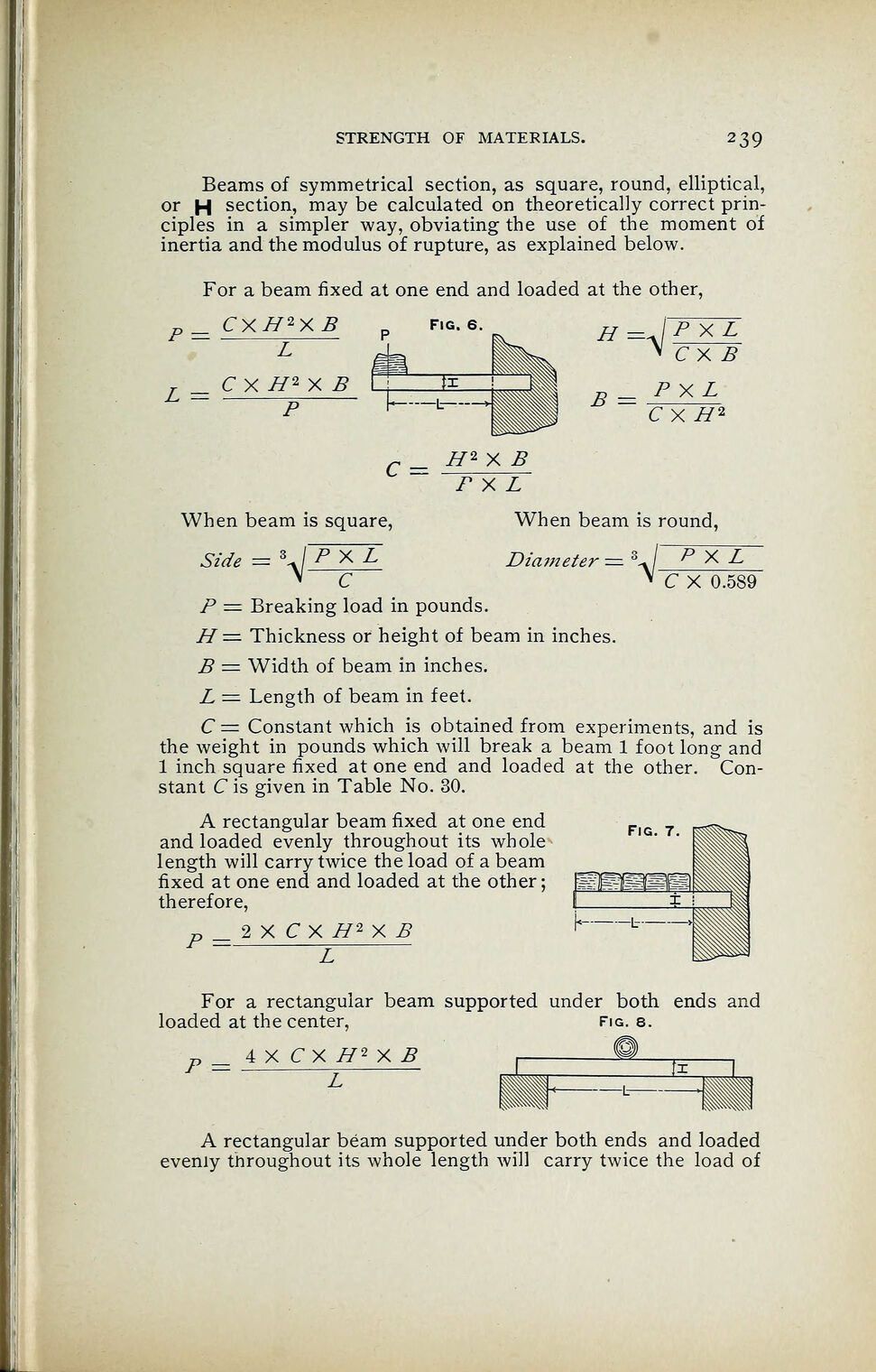
Full resolution (JPEG) - On this page / på denna sida - Strength of Materials - Formulas for calculating transverse strength of beams

<< prev. page << föreg. sida << >> nästa sida >> next page >>
Below is the raw OCR text
from the above scanned image.
Do you see an error? Proofread the page now!
Här nedan syns maskintolkade texten från faksimilbilden ovan.
Ser du något fel? Korrekturläs sidan nu!
This page has never been proofread. / Denna sida har aldrig korrekturlästs.
STRENGTH OF MATERIALS. 239
Beams of symmetrical section, as square, round, elliptical,
or H section, may be calculated on theoretically correct prin-
ciples in a simpler way, obviating the use of the moment of
inertia and the modulus of rupture, as explained below.
For a beam fixed at one end and loaded at the other,
CxH2
XB Fig. 6.
H =v
P XL
CX B
. P X L
CXH2
P X L
When beam is round,
Diameter = s
-« /
P X L
C X 0.589
When beam is square,
Side = S
J PXL
P = Breaking load in pounds.
H — Thickness or height of beam in inches.
B = Width of beam in inches.
L = Length of beam in feet.
C = Constant which is obtained from experiments, and is
the weight in pounds which will break a beam 1 foot long and
1 inch square fixed at one end and loaded at the other. Con-
stant C is given in Table No. 30.
A rectangular beam fixed at one end
and loaded evenly throughout its whole
length will carry twice the load of a beam
fixed at one end and loaded at the other;
therefore,
p _ 2 X C X H2
X B
For a rectangular beam supported under both ends and
loaded at the center, fig. 8.
4X CX H2
X B
A rectangular beam supported under both ends and loaded
evenly throughout its whole length will carry twice the load of
<< prev. page << föreg. sida << >> nästa sida >> next page >>